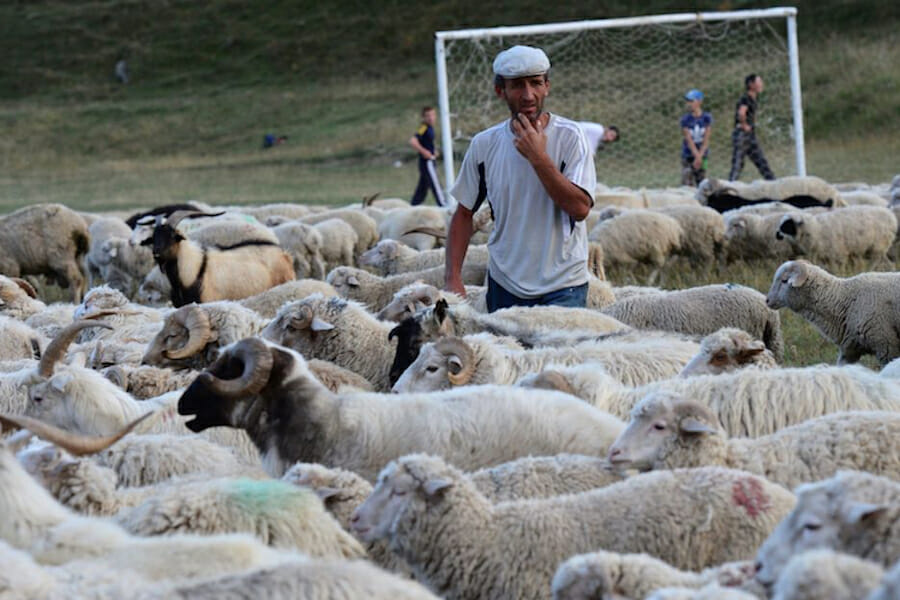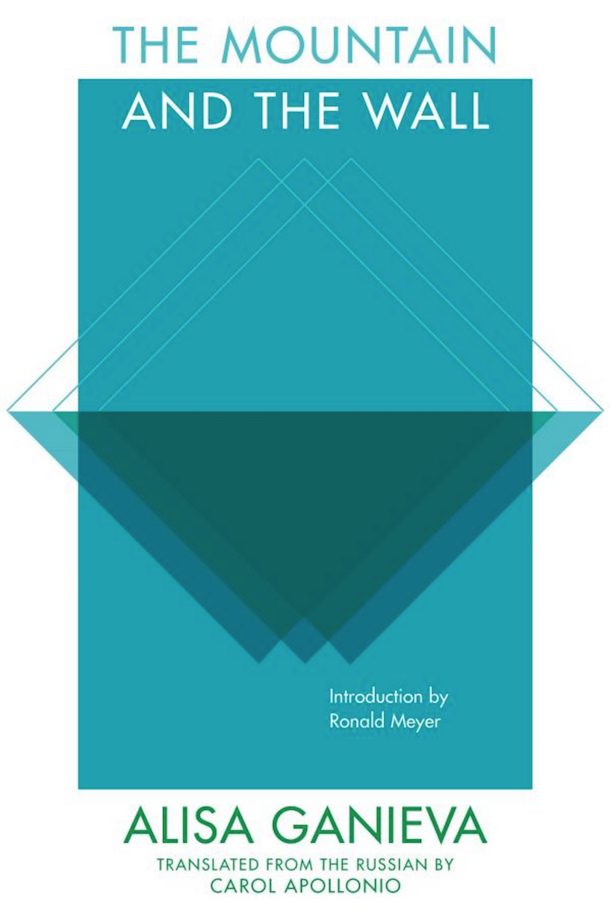
Books
Book Review: ‘The Mountain and the Wall’
The Mountain and the Wall, written by Alisa Ganieva, is the first Dagestani novel to be published in English and its interwoven narratives provide fascinating insight on the intrapersonal and interpersonal conflicts that arise throughout a community being transformed by the vacuous nature of Russian politics and religious extremism. The setting – a realistically near-future, dystopian Dagestan – illustrates the complicated political nature of identity and security in the multi-national, multi-religious Russian Federation, while the characters – Soviet-styled secularists, middle-class moderate Sufis, radicalized and non-radicalized Salafists – search for meaning and purpose amid rumors and chaos.
The novel’s prologue introduces what could be described as contemporary Dagestan with family and friends discussing and playfully arguing the juxtaposition between cultural traditions and modernity. Within the dialogue each character brings to bear a personal interpretation on how external forces have transformed the region – European popular culture and radical Islamism playing predominant roles – and whether or not the impact should be deemed a cause for celebration or a societal detriment. It is from this framework the text flows into a series of intersecting storylines that capture individual viewpoints on whether the region is truly deteriorating or transforming into something better.
After an inexplicable collapse in the region’s telecommunications infrastructure, the Dagestani people are cut-off from the world and, simultaneously, unsubstantiated rumors about the Russian government constructing a wall along Dagestan’s northern border begin to spread.
It remains uncertain if the wall is being built to keep people in or out but, eventually, ascertaining that answer falls to the wayside as the country is forced to fend for itself. Popular protests and ideological criticism increasingly takes hold across the capital as confusion, misinformation, and power grabbing from religious leaders – seeing a power vacuum stemming from fleeing or disappearing government officials – begins to divide communities and families.
The novel’s protagonist – Shamil – is a young reporter who narrates the political, religious, and cultural upheavals that take place while his country and community falls into disarray. However, for as much as Shamil is interested in these topics throughout the course of the book – with family and friends providing detail and justification for actions and reactions – he seems to progress in an almost unthinking and at times misogynistic manner. His confusion and anger in dealing with the turmoil of his fiancé leaving him to marry a radical, militant Islamist and the hope he experienced in a dream-like state on the Mountain of Celebration play central roles in his existential struggle.

Witnessing unrest and violence throughout the city and being around those lamenting that “things are always falling apart”, Shamil personifies everyone’s search for fact-based information in a time for crisis as well as illustrates the comfort of routine at a time when everything around them is changing. As tensions mount, everyone seeks an opportunity to escape, either the trappings of life or the pressure from externalities to change and conform.
As a means to expand the individual narratives, characters are continually introduced to texts – newspaper articles, a novel and children’s story – that further illuminate the tension building in the novel. In contrasting points, where is the Wall illustrates despair and division while the Mountain of Celebration exemplifies hope, these additional texts assist in understanding the underlying conflict between tradition and modernity, and how Ms Ganieva intends to inspire optimism in a time of despondency.
The Mountain and the Wall is a compelling read that masterfully intertwines the politics of the contemporary Caucasus with an all-too-realistic dystopian future. More importantly, the wide release of this work makes Dagestan, in particular, and the Caucasus, in general, more visible to the rest of the world. It takes a snapshot of the complicated political, religious, and cultural landscape that, sadly, very few have taken the time to understand.
Context and Setting
Where The Mountain and the Wall begins is a reflection of the republic’s current state of affairs; an upsurge in Salafism as the modern state teeters on the brink of collapse. The book’s setting is Makhachkala, the capital of the Republic of Dagestan, which is the most religious, diverse, populated, and complex republic between the Black and Caspian Seas. In this part of the world it was standard practice to raise a shot of vodka to Allah, but the continuing encroachment of Salafism into the region’s identity – a reaction against the Russian state and as a means to correct the local, secularized version of Islam – has been transformative and regressive.

Comprehending and appreciating Dagestan’s history is not necessary for understanding Ms Ganieva’s text but it would be beneficial to appreciate the references and nuances made throughout the story. This is not to say that a reader will miss key plot points without in depth knowledge – Let Our Fame Be Great by Oliver Bullough would be a great place to begin if one is inclined to learn about the region’s rich history – but some characters do mention past events as a means to justify actions. Moreover, Ms Ganieva uses the country’s current mood, expressions, and conflict to build this work of realist fiction.
The Caucasus region has historically provided Muslim communities the religious and cultural autonomy they sought, but this came to an end when the Bolsheviks attempted to Sovietize and modernize the region. Their efforts eventually failed and the region was never fully integrated into the empire making conflict seemingly inevitable after the Soviet Union’s collapse. The five Muslim republics that constitute the region [Dagestan, Kabardino-Balkaria, Ingushetia, Karachaevo, and Chechnya] are affiliated by an administrative government yet act independently of each other. Checkpoints and military personnel are stationed at border crossings and the region’s unity, particularly in times of conflict, is not guaranteed, as was illustrated during the Chechen wars.
In 1994, Chechnya declared its independence after the Soviet Union collapsed and the ensuing violence slowly spread to its neighboring republics, though many abstained from the fighting. The primary reason was that the first Chechen war was bred by Chechen nationalism; a sentiment that was not shared across all republics because of the continued reliance on the Russian state for stability and security. Violence spread quickly during the second Chechen war because conflict was born out of religious ideology which resonated strongly with the region’s diverse communities. The remnants of the second Chechen war still echo in the people, today, and has played a prominent role in how individuals perceive religion, the state, and identity.
Each republic has its own administrators and institutions and each is displeased with the state for their own reasons, though there is a common theme in the people’s grievances which was mentioned numerous times in The Mountain and the Wall: institutionalized corruption. As represented in her novel, Dagestan has been destroyed by corruption to the point that no one can truly rely on the state or the institutions because they represent chaos and violence rather than security. Distrust in the state had been growing for some time but it was the state’s reaction to the Salafist movements in 1999, leading to the breakout of the second Chechen war that caused deeper societal divides.
As conflict broke out, Dagestan resented the Salafist leaders – Shamil Basayev and Amir Khattab – and viewed Russian intervention positively, while Sufi leaders expelled Salafists en masse. The manner in which the state attempted to achieve stability and security ended up being its undoing, in part – it chose sides in a religious war. When this transpired, disappearances, torture, and extrajudicial killings became commonplace and this is the reality across Dagestan.
The circumstance surrounding the terrorism and counter-terrorism campaigns deeply impacts the characters in Alisa Ganieva’s work. As The Mountain and the Wall accurately depicts, it is not the number of fighters or the ideology that provides the Salafist extremists their strength but the state’s failures to care for its people, prominently brought out during a heated argument between Shamil and his fiancé. To win acceptance, the Salafists adopted human rights rhetoric for their cause and inspired people through popular protests against the state, which assisted in painting Sufis as being tainted by their association with a corrupt state – an iteration made extensively in The Mountain and the Wall.
In The Mountain and the Wall as in reality, the region witnessed an increase in Salafism which led to growing ethnic and religious tensions. Here the novel begins, in the story as in reality, Dagestan finds itself wading through cultural conflicts for which it is unprepared.
